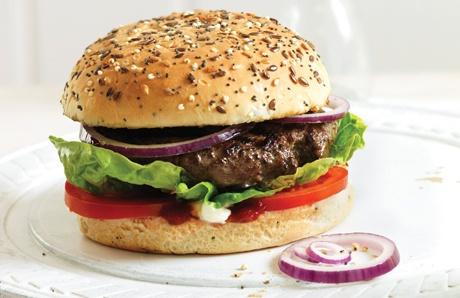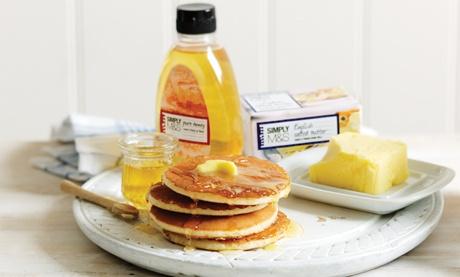Under the influence
Brands are muscling in on popular culture, engaging people in music, sport and food – and the public seem very willing to embrace the new tastemakers.
Above: Smartphone maker Nokia is introducing customers to new music through playlists that make recommendations it thinks people will enjoy. The brand has musicologists in 28 countries looking out for breaking trends, emerging artists and songs to bring to users’ attention
Supermarkets sell food, broadcasters provide television shows and mobile phone companies give us the means to talk to and text each other. This may not seem out of the ordinary but a raft of brands are now trying to influence consumers beyond their original purpose by bringing hobbies, ideas and sport to the mass market and affect popular culture.
Waitrose will be attempting to tweak the tastes of a nation by becoming the publisher of The Good Food Guide, while Sky has been contributing to the UK’s cycling habits via its sponsorship of Team Sky, which has helped to increase the overall number of cyclists to 15.2 million, a rise of 17 per cent since 2010. Meanwhile, smartphone manufacturer Nokia is providing suggestions on the music customers might like by using its global team of musicologists to keep an eye on trends.
Urban and hip hop artists’ ability to work with brands is part of what makes them cool. They’re credible in spite of being commercial
The success of Team Sky and the interest around the riders including Chris Froome and Bradley Wiggins, who won the Tour of Britain last week, has raised the profile of cycling in the UK, but it could not have been achieved without Sky’s backing.
The aim of the partnership between Sky and British Cycling, which is now in its fifth year, was to make cycling a growing trend in UK sport and it has done that successfully.
“There has been huge growth and interest in cycling, which we feel quite confident has been a result of our investment in the sport,” says Tricia Thompson, director of cycling at BSkyB. “The number of people going to watch the Tour of Britain, the media profiles of the riders, the fact that cycling has appeared on the Today Programme, all this would never have happened a few years ago.”
Team Sky’s key focus and strategy has always been about ‘inspiration to drive participation’. The brand achieved targets earlier than planned, including Bradley Wiggins winning the Tour de France in 2012, one year ahead of schedule and then he took gold at the London Olympics. But it has also influenced the public, by getting a million more people on their bikes since the partnership began in 2008.

Sky Ride initiatives have also been introduced by the brand where cyclists of all abilities ride in a traffic-free environment. Thompson says: We bring the stars to the Sky Ride events as it’s an opportunity for cyclists to meet them and for them to sprinkle their fairy dust. We were trying to create that behavioural change and get people to think about cycling as a part of their life.”
The Sky investment also created a shift in sentiment towards the brand. Independent research by GfK shows a 31 per cent increase in favourable attitudes towards Sky because of its cycling initiatives and a third of the population associates the brand with cycling.
Although marketing can have a poor reputation among the public, it is the influence of brands beyond selling to people that can raise its profile. Nicola Coronado, marketing director for Bodyform owner SCA, cites the Olympics as key.
She says: “The Olympics is an example of where brands and marketing have positive influences. That was successful not only because it was a fantastically managed campaign but also because the marketing, which engaged with different target audiences, provided content and got people debating. The legacy of the Games is to a great extent down to its marketing campaign.”
The move towards involvement in popular culture means that brands can also be seen to enter debates and present ideas to consumers to spark conversations. Bodyform aims to do this through its partnership with The Huffington Post, which supports the Bodyform For Women campaign.
The campaign will run for six months on The Huffington Post’s Women channel, which will soon introduce a new series, The Women Who Changed My Life, offering insight into the inspiring women who have influenced, encouraged and nurtured some of the UK’s most successful females.
Technology is another area where influence is growing in terms of making recommendations and introducing consumers to new ideas.
Digital artists were commissioned by John Lewis to showcase their art on super high definition televisions at a gallery in the W London hotel, as a way to promote how televisions can be used other than for watching programmes. This prompted some consumers to ask the retailer if they could buy the art as well as the TVs in their stores.
Certain brands are influencers - M&S is one. It has a long history of shaping the way British think about and consume food
Meanwhile, Nokia aims to bring the latest in music trends to its customers through an app, available on its Lumia Windows Phones, which offers both a store of current music and Mix Radio, where the brand creates playlists for users.
Nokia sees its influence on popular culture as a symbiotic relationship. The phone company uses trend spotters in 28 countries to pick up on the latest crazes while aiming to affect popular culture by influencing consumers.
Andy Gaitskell-Kendrick, head of marketing at Nokia Music, says: “A large part of what we do is introduce people to new music that we think they will enjoy. We have a global team of musicologists that are always looking out for breaking trends or emerging artists or songs that are trending in different parts of the world and then promoting those to other people who we think will like them.”
However, he points out the influence a company can have on popular culture depends on the nature of the brand or product. “If you are in the music industry, it’s inherent because you are part of popular culture. If you are an FMCG brand or a product where the formulation doesn’t change, you are looking for stories all the time.
“To be involved in popular culture, particularly the creative side, gives brands the opportunity to reinvent stories or build key components of their brand promise. It can give them ‘currency’ and relevance in specific target markets.”
This demonstrates that influence can come from being a brand that enables people to discover trends because of its market positioning or from encouraging people to talk about and share content via social media.

M&S Food
Heat magazine maximises conversations on the platforms and channels it operates on, including mobile, tablet, online, radio, TV and print, in order to push content to its readers.
Richard Howard, publisher of Heat and Closer magazines at Bauer Media, says: “With the rise in social media and platforms, Heat now focuses efforts on maximising our dialogues on the platforms that we operate on.” He claims that Heat has influenced popular culture by coining acronyms such as LOL (laughing out loud) and OMG (oh my god), contributing to a “fun” personality that advertisers want to engage with.
He adds: “We have coined a number of phrases over time. Whether it has been abbreviations such as ‘totes-amaze’, LOL or OMG, they were all created by Heat. More recently, celebrity nicknames like K-Middy [Kate Middleton], P-Middy [Pippa Middleton] and R-Patz [the actor Robert Pattinson] have been added. These are all things that we’ve had fun with and then the public have taken them on and run with them themselves.”
Heat, which has a gross audience of 4.8 million, recently issued a study about its readers using neuroscience to test engagement levels over various platforms and the role each platform plays on emotions.
It found that the print magazine elicits strong attention levels and emotional intensity, the online platform also links to strong attention levels and Heat Television connects with memory and engagement, all of which it claims affect interest areas for advertisers and in terms of producing editorial content.
Howard says: “What clients want to be a part of is the relationship and the influence we have over the consumers. That isn’t a dictatorial relationship like it might have been historically, it is a two-way approach in that we have to take on board what consumers want and say as much as we try to set trends and influence.
“Where we can add real value for external clients is for them to be a part of that conversation and they can drive some kind of emotional connection for their brands.”
The explosion of interest around food is another prime example of influencing consumers. Brands such as Marks & Spencer and Waitrose have encouraged trends in the consumption of high quality food with initiatives including tie-ups with celebrity chefs.

M&S Food has set trends in British culture by inventing pre-packed sandwiches and prepared meals to heat up at home
Most consumers would recognise an M&S advertisement, which might state ‘these aren’t just potatoes, they are M&S potatoes’, a technique that has been mimicked by other brands and consumers. The brand never imagined the response to the ads would capture the public’s attention to the extent they did (see Q&A).[1]
Nathan Ansell, head of brand and marketing at M&S Food, says: “There are certain brands that are influencers and I think M&S is one of those. M&S has a long history of shaping the way the British think about and consume food.
“We know the brand occupies a special place in the hearts and minds of the British public – they notice even the smallest things we do and say – and everyone has an opinion.”
The retailer has seen a resurgence in interest around game, so will begin selling wood pigeon, pheasant and grouse this month. “Putting these sorts of ranges in a major high street retailer provides more customers with the chance to try something a bit out of the ordinary,” says Ansell.
Traditional techniques will continue to have an important role in marketing but brands can also take opportunities to embed themselves further in people’s minds. Producing content, curating experiences and thinking beyond the sell will help brands cement their popularity.
Traditional techniques will continue to have an important place in marketing but brands can also jump on an opportunity to embed themselves further in people’s minds. Producing content, curating experiences and thinking beyond the sell will help brands cement their popularity.
How to make your brand go pop
- Get behind issues to create debate but let consumers to discuss issues rather than dictate to them. Dove’s ‘Campaign for Real Beauty’ is a classic example, more recently followed by Bodyform’s ‘For Women’ initiative, including a partnership with The Huffington Post’s women channel which will see a series of articles aimed to spark discussion.
- Ensure the message you are trying to get across, or the way that your brand wants to influence popular culture is consistent across channels. Heat magazine wanted to make sure that the engagement of readers was the same across all of its platforms - including TV and radio - and so it commissioned research using neuroscience techniques to do so.
- ’Curate’ the experience for customers based on their behaviour. Recommendation apps and services are a prime example of brands facilitating trends based on data. Classic examples are Amazon’s recommendation emails based on purchase behaviour or Nokia Music which creates playlists for its users. However, brands should be careful with their recommendations as getting personalisation wrong may steer consumers away.
References
- ^ (see Q&A). (www.marketingweek.co.uk)









